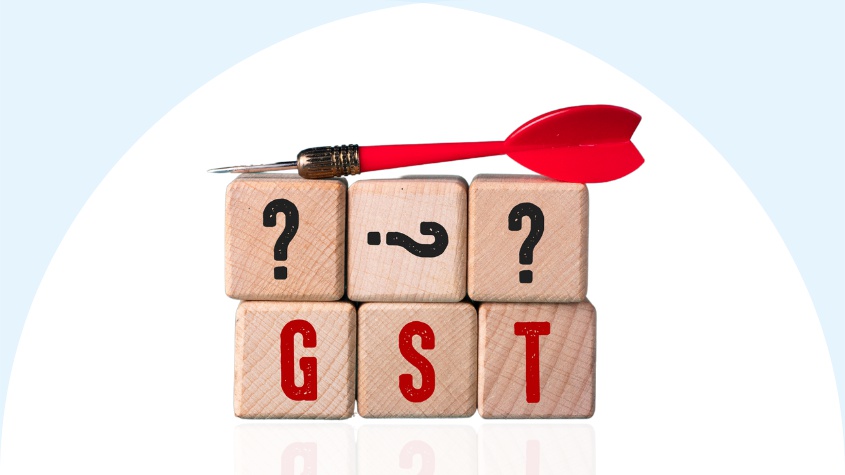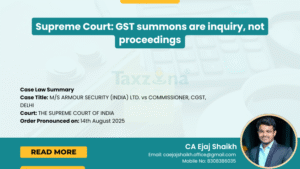Starting a small business in India can be exciting and rewarding, but it can also be daunting and confusing. That’s why it’s important to get everything in order from the start. This blog provides information on how to register GST for small business in India, along with details on the different forms and documents that you’ll need to file.
It also provides tips on when you should file your GST return in Mumbai and advice on how to manage tax time efficiently. So whether you’re just starting out or you’ve already been running your business for a while, this blog is sure to help you get ahead!
How to Register GST for Small Business in India
Starting and running a small business in India can be a daunting task, but it’s not impossible. To register GST for your business, follow these simple steps: First, complete the registration process by following the instructions provided. Once completed, the registration process will be verified and you’ll receive a unique acknowledgement number.
You can now start filing your taxes and paying your bills using this number. Make sure to keep track of all the important dates so that everything goes smoothly! As a small business owner, you’ll be grateful for all the help and guidance that the GST registration process provides.
Steps to Follow For Registering GST For Small Business in India
It’s that time of year again – tax season! For small business owners in India, GST ( What is Goods and Services Tax ) is a new tax law that needs to be taken into account. If you’re not registered for GST, you will face penalties and possible complications when filing your taxes. Here are some important steps you need to take in order to register for GST and stay compliant:
First, keep track of all your business GST filings so you’re always in compliance; next, appoint an authorized representative; and finally, submit invoices and purchase orders. Here are some tips to know Types of GST in India- CGST, SGST & IGST – Nicely Explained. Note that there are several deadlines associated with filing your taxes, so it’s important to plan ahead. As long as you follow the proper steps and adhere to the deadline dates, you should have no problem registering for GST this year!
Where Can I Get More Information About GST?
Starting a small business in India can be a daunting task, but it’s not impossible. To make the process easier, follow these tips:
- There are a variety of resources available to help small businesses register for GST. The online registration system is the quickest and easiest way to go about it.
- More information can also be found at the GST website or by calling the helpline number provided in the brochure given out by the government.
As long as all required documents are attached with your application, you’re good to go! Keep in mind that the registration process can take up to six weeks, so don’t wait too long to get started.
Which Forms Require Filing of GST for Small Businesses in India?
Starting from July 1st, 2017, all businesses in India that have an annual turnover of Rs 50 lakh or below are required to register for GST or you can visit here to know how to login on gst portal. This is done through the filing of Form GSTR-1.
Make sure you file on time, as the due date for filing is July 31st each year. Besides filing Form GSTR-1, other forms may also need to be filed depending on the business activity and its tax profile. {Pro Tip: GST Council: Constitution, Functions, and Decision}
Make sure you consult your tax advisor to ensure you are filing all the required forms and documents. In addition to filing Form GSTR-1, you may also need to file Form GSTR-2 for e-commerce transactions, Form GSTR-3 for real estate transactions, and Form GSTR-4 for services transactions. So make sure you stay on top of your filings and stay compliant with the new tax regime!
When Should You File Your GST Return For A Small Business in India?
Filing your GST return for small business in India is important for a few reasons. First and foremost, it’s crucial to know the filing deadline which is April 30th every year. Secondly, it’s important to keep track of your business details so you can file your return on time.
Thirdly, having an accounting outsourcing services software that will automatically file your return for you can save you a lot of time and hassle. Fourth and finally, filing your return correctly will ensure you don’t incur any penalties and enjoy Tax Free Shopping!
Conclusion
If you are a small business owner in India and you are unsure about how to register GST online for your business, then this blog is for you! In this article, we will guide you through the process of registering GST for your small business and provide you with all the necessary information.
Make sure to read through the article carefully and follow the instructions to the letter to ensure a smooth and successful registration process or you can speak to our experts.
We hope that this blog was of help to you and that you will find the answers to all your questions about registering GST for your small business in India here!
Frequently Asked Questions
If you own or run a small business, then you are automatically liable to pay GST (Goods and Services Tax). This tax is charged on the purchase and sale of goods and services in India.
If your business turnover exceeds Rs.20 lakh per annum, then you will have to register with the GST department and file returns every month. You will also need to keep records of all transactions made through your business and ensure that you have an invoice or purchase order system in place.
In addition, make sure to educate yourself about GST so that you are fully aware of any tax obligations that may apply to your business.
If you need extra help with your GST filings for small business, then you can always contact an accountant or tax adviser. They can help guide you through the process and provide tips and advice on what you may need to pay in taxes.
Additionally, online tools and calculators can be helpful in estimating what you may need to pay in taxes. Simply search for "GST calculator" or "tax calculator" on Google or other online resources to get started.
The first step in filing your GST return is to gather all the information you need about your business. This includes things like your company's registration number, the types and quantities of goods and services you've sold, and the amount of GST you've collected.
Next, you'll need to create an Economic Report which will list all the items and expenses incurred by your company during the GST period. This report will help you calculate and pay the correct GST tax. Finally, file a Return of Income (GST) with the relevant tax authority. This will show them how much tax you've paid, as well as supplying them with other important business information.
Registering for GST (goods and services tax) can be a cumbersome and time-consuming process, but thankfully, it's simple to get started. Here are the steps that you need to take:
- First and foremost, you'll need to register with the GST Network. This can be done online or by visiting their office in person.
- Once registered, you will be able to start filing your returns and remitting taxes. Keep records of all expenses incurred during the period for which tax is being paid, as well as all invoices and receipts related to those expenses.
- There are a few other things that you'll need to take care of too like keeping accurate books of account, maintaining mandatory documents, and more. But don't worry, all of this will be explained in detail during the registration process.
Overall, registering for GST is a fairly easy process and it will help you stay compliant with tax obligations while running your small business in India.




